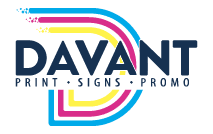Business name…check
Business plan…check
Buy-in from your dog, Rover…check
Website domain name…check
That fancy desk chair you’ve been eyeing…check
Business bank account…check
So, you have a business idea and plans in place to get the ball rolling – good work. But with that business bank account sitting there filled with some startup funds and investor checks, how on earth do you allocate a marketing budget?
What is a Startup Budget and Why is it Important?
A startup budget is how you reinvest capital back into your company. These budgets represent your business plan: the more money you allot to part of your business, the more it can grow.
Your first startup budget can serve as a spending roadmap. Creating a budget can prevent you from running out of money, as the exercise helps you strategically spread out your startup spending.
High-Level Startup Marketing Budget Norms
While there is no hard-and-fast rule on setting a startup marketing budget, the suggested way is to take a percentage of actual or projected gross revenue. The percentage you apply will depend on the startup’s size, age, and industry.
Startups need to invest in marketing until market share is established. During this brand-building phase, a typical startup budget spends 20% of revenue on marketing efforts.
Once the business is operational and generating sales, the U.S. Small Business Administration recommends budgeting 7%-8% of gross revenue for marketing expenses. This marketing budget benchmark assumes the business’s revenue is under $5 million and its net profit margins are between 10% to 20%.
Consider This as You Allocate a Marketing Budget for Your Startup
- Start by focusing your investments in a few intentional areas. Coming out guns blazing shows enthusiasm, but not a budget-friendly approach. Remember, there is always room for growth and expansion as traction is gained.
- Know your budget and shop around. The two most important things to remember during this process are to be resourceful and that there is no “right” answer. You’ll likely split A/B testing messages, visuals, and audiences until you begin seeing momentum.
- Really – really – understand how each strategy will impact your business. Basics such as collateral shouldn’t go any higher than 5% of your gross revenue unless your brand strategy calls for it. Advertising, PR, etc. are all similar. Which ones are going to help you achieve your business goals? Focus on what is going to help you succeed.
- Pick one thing and do it well. By pouring all your efforts and money into a single method, you will be able to use that to break through the noise and get more business.
- Memorize these three data points: burn rate, funding, and sales cycle. The first stage of spending (name, logo, messaging, brand identity, and website) can be done for between $30,000 and $50,000. Then, it is best to launch with PR, organic social, content, and possibly some paid ads. Self-funded, slow-growth companies should begin at $7,000 per month.
Let Davant Handle Important Marketing for Your Startup
Print marketing is an important part of a successful marketing strategy, and it may be one of the best ways for a brand to stand out. In fact, with so many businesses now focusing on online marketing, it’s a great way to reach customers who have overloaded inboxes and social media fatigue. At Davant, we can handle the printing side of your marketing budget from start to finish. With a small investment in print materials that stand out from all the others, you’ll be able to boost your results even more! Let’s get started!
Photo credit: https://unsplash.com/photos/JW6r_0CPYec

